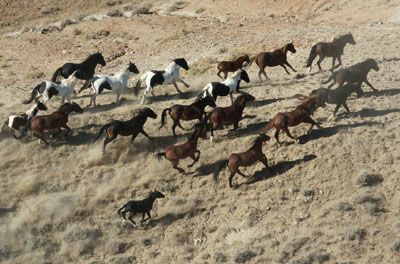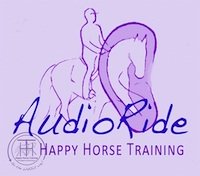|
Understanding Horse Herd DynamicsThis is a description of herd dynamics written by one of our previous working students, Naomi Sharpe, from her own observations of horse behaviour in a semi-wild herd in the US. Within a herd there is typically a lead stallion and a lead mare. It is their role to keep the herd safe and moving. With the lead mare at the front of the herd, and the stallion pushing from behind, they lead the community to food and water. In wild horse herd dynamics, the stallion also has a second role of resolving any conflicts between other horses. From an observational point of view, it is very interesting to note that in certain situations the stallion chooses to intervene, but in others he does not. For minor disputes, if he considers that it is in the best interests of the horses concerned to fight it out alone in order to learn a particular lesson, he will let a conflict go ahead, all the while keeping a watchful eye on the proceedings. 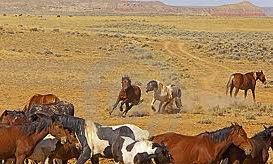
If, however, the fight is more serious, puts the herd in danger, or threatens his position as lead stallion, he will intervene by displaying aggressive body language. In most cases, this means lowering his neck and flattening his ears towards the other horse, often with a short charge. If this is not enough, he will display all of this behavior with a bite or kick at the end. As soon as the message has been received the stallion becomes very passive and resumes whatever activity he was doing before the conflict, such as eating or grooming. The rest of the herd has a pecking order from the highest-ranked horse, after the lead mare and stallion, to the lowest-ranked horse. When a horse is introduced into the herd, they initially begin at the bottom of the ranks. It is up to them to work their way up (or not!) by challenging and gaining the respect of the horse above them. They do this by claiming the higher-ranked horse’s space. A good opportunity for a social climber presents itself when the higher-ranked horse is not paying attention. If the lower-ranked horse chooses to take this opportunity, he sneaks up on the other horse, trying to physically make them move away from that particular space of land. If successful, the lower-ranked horse claims that space and therefore a higher position in the herd. Although this is one of the most common methods in herd dynamics, it is not the only way in which rankings can change.
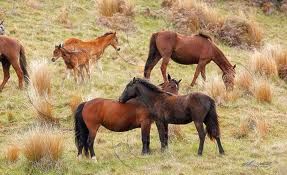
This is the easiest time to observe bonds between members of the group – many horses seem to have a “best friend” who is their favourite grooming companion, and with whom they spend a lot of time.
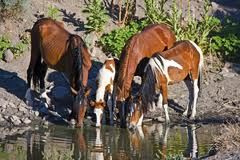
The annual birth of foals is an important part of herd life. A pregnant mare will usually move away from the herd to have her foal with the stallion in position on the edge of the herd, giving her some space yet remaining close enough to protect her if necessary.
If we bear herd dynamics in mind, we can communicate in a language that all horses can understand with ease. This allows a real conversation to be had between horse and human, that is not only very effective in training horses, but is also hugely fulfilling.
Relevant pages on Happy Horse Training that may interest you: return from Understanding Horse Herd Dynamics to Happy Horse Training home |
New from HHT!
AudioRide is a series of exercises designed to listen to while you ride.
Audio descriptions guide you through each step of developing a balanced, dynamic connection with the horse through your position.
This truly innovative learning tool gives you a whole new way of being guided in your riding, in a calm, clear, step-by-step way.
Free Download! Introductory Exercise: Riding in the Now
Click here for full details
The Gymnastic Rider eBook
Now available exclusively from HHT! A unique, comprehensive guide to practical rider biomechanics. This professionally produced eBook takes the rider through the process of developing their body in the specific way that brings the horse's movement into harmony and balance - without force and constraint. Click here for full details, and to download the 15-page introduction for free.
Join the Happy Horse Training group on Facebook!
See and share topical info, news and photo's, and take part in lively discussions.
Click here to go to the HHT group and then click on the 'join group' button.
Join the Whole Horse Newsletter
HHT's free monthly newsletter giving you wide-ranging and intelligent insights into holistic horsemanship.
Just enter your details below to join.
Free bonus on the riding position with all new subscriptions: Ten Top Tips To Instantly Improve Your Connection With Your Horse.
Click here to see back issues of The Whole Horse newsletter
Train Your Horse
The Holistic Way
How To Train A Horse Without Force is a unique guide to training horses through energetic connection and gymnastic training. Part 1 covers everything on the ground, from handling to the lungeing technique that develops strength, straightness and engagement. Comes with a free eBook supplement on Horse Trauma.
Click here for more details.
What people say about the eBook:
"OMG! I'm BLOWN AWAY by this text [...] It's one of the best horse training texts I've ever read." - Wendy Kendall
"I realized that I haven't yet written you about the impact that your training e-book has had on me, and I want to let you know how inspiring and helpful I found it. As a student of Zen Buddhism for nearly three decades, I've often wondered when someone was going to write the book on Zen and the art of horsemanship, and I think that your emphasis on mindfulness and energy connection gets right at the heart of the matter. It has certainly deepened the way that I relate to and communicate with my horses. I am reasonably sensitive to horses' body language and mood, but new to me was the idea of feeling their energy in a more subtle way - including their connection with me even when I am not directly working with the them. I have made myself more aware of this communication, and it's pretty amazing. I have started grooming differently, too, treating a grooming session as a time to mindfully listen to my horse instead of a way to dust out an old rug (OK, I wasn't quite that bad, but you get the idea). Additionally, I have made myself more open to how I actually feel about the horses themselves - very enlightening. Overall, I think that you are saying something that no one else is saying but that everyone ought to hear." - Tess Lloyd
Do You Have
A Horse Story
To Share On HHT?
So many people have been through wonderful experiences with horses, whether in training or otherwise. If you've made a change in a horse's life - or one has made a change in yours - tell us about it here.
Learn How To Trim
Your Own Horse's Feet
The Simple Seven-Step Natural Trim is a comprehensive step-by-step guide to a cutting-edge barefoot trim. Click here to find out more.
What people say about HHT:
"The riding instruction is outstanding, if instructors in the UK taught this way there would be a lot of happy riders and horses."
"The riding tuition exceeded my hopes and expectations by a long way; giving me an exciting new facet to horsemanship which is lighter. more subtle, more elegant and more meaningful. It is as if a new door has opened bringing more sunlight and air."
"My goodness - what a change has taken place in my riding. I think that I'm starting to sit 'into' the horse rather than on top of him. I felt my horse's movements in a way that has almost never happened before"
Click on Testimonials for more





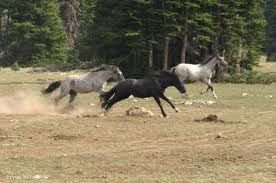 Another example is when a colt reaches maturity and is expelled from the herd, his position becomes “vacant” ready to be filled by another horse. It is interesting to note that although the dynamics and pecking order are constantly changing, it is rare for individual horses to make big leaps in the ranking. A higher-ranked horse will typically have a more dominant personality and will stay near the top, whilst a lower-ranked horse will generally be more passive and accept a lower place. New members gradually climb from the bottom to the rank that fits their personality and from there regularly climb or fall one or two “notches”, hovering around the same general level.
Another example is when a colt reaches maturity and is expelled from the herd, his position becomes “vacant” ready to be filled by another horse. It is interesting to note that although the dynamics and pecking order are constantly changing, it is rare for individual horses to make big leaps in the ranking. A higher-ranked horse will typically have a more dominant personality and will stay near the top, whilst a lower-ranked horse will generally be more passive and accept a lower place. New members gradually climb from the bottom to the rank that fits their personality and from there regularly climb or fall one or two “notches”, hovering around the same general level.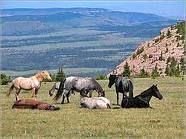
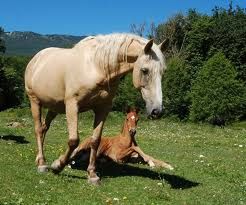 The herd dynamics are set up to ensure the safety of the foal - the herd's future. Within hours of the birth, the foal is up on his feet suckling from his mother. There is an incredibly strong bond between the mare and the foal; the foal doesn’t leave his mother’s side until confident enough to explore the environment. The mare makes sure that her foal keeps moving so that he develops good muscle strength and keeps safe from predators. The stallion also takes a proactive role in the foal’s up-bringing by playing and teaching the foal about herd etiquette.
The herd dynamics are set up to ensure the safety of the foal - the herd's future. Within hours of the birth, the foal is up on his feet suckling from his mother. There is an incredibly strong bond between the mare and the foal; the foal doesn’t leave his mother’s side until confident enough to explore the environment. The mare makes sure that her foal keeps moving so that he develops good muscle strength and keeps safe from predators. The stallion also takes a proactive role in the foal’s up-bringing by playing and teaching the foal about herd etiquette.